
Get high-quality backlinks that help you to increase organic traffic and improve search engine rankings. Make your business more visible online with Press Releases, Google Profile and Social Media Management Services.
BACKLINK
CAMPAIGN
HAPPY
CUSTOMERS
DOMAIN POWER BOOSTER
CAMPAIGNS
PRESS RELEASE
CAMPAIGNS
ON THE MARKET

You may have heard about the importance of backlinks for SEO optimization and domain authority. Check below.

Backlinks, also known as inbound links, are links on external websites that direct users back to a page on your own website. These backlinks serve as a means of driving traffic from other websites to your own.
Having lots of good-quality backlinks can improve how high your website shows up on Google and Bing.
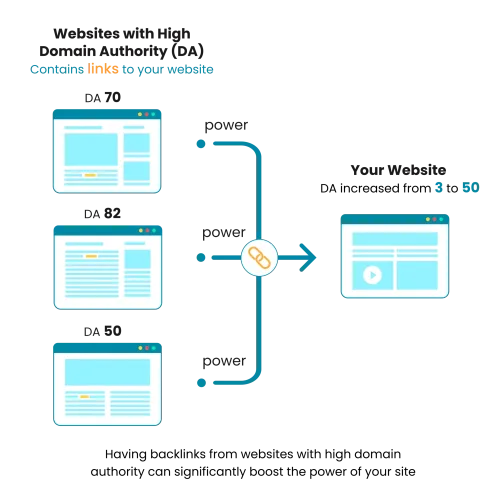
In 1998, Google introduced the revolutionary PageRank algorithm, which revolutionized the way search engines determine the importance and relevance of web pages.
PageRank treats every link to a web page as a vote of confidence, making the page more credible and important to Google based on the number of backlinks it receives.
Therefore, backlinks play a crucial role in improving your website's SEO. They help build trust and popularity of your site. When authoritative websites link to yours, it serves as a vote of confidence and increases the credibility of your site.
The more quality backlinks you have, the higher your site will rank in search results.
There are few ways to get backlinks for your website. One of them is to get backlinks naturally or buy them.

To obtain backlinks naturally, create valuable content such as articles or videos that people will enjoy. Share this content on other websites or social media platforms.
When others see your great content, they may link to it on their own websites. This method takes time as you need to create excellent content and share it in multiple places.

You have the option of paying for backlinks, and LinkDaddy can help you with that. We will create top-notch backlinks for your website, saving you time and effort in content creation and distribution.
This option is suitable if you want to save time and are willing to invest some money.
We are a leading backlinks SEO agency with a proven track record of success. We have helped hundreds of businesses improve their search engine ranking and drive traffic to their websites. We offer a wide range of buy backlink services, including:
We are committed to providing our clients with the best possible service. We work closely with each client to develop a customized SEO strategy that meets their specific needs. We are also transparent about our pricing.
We offer high-quality, niche relevant and Google-Friendly dofollow backlinks with high DA and Traffic to your websites.
Having backlinks to your website can make it more discoverable, resulting in an increase in traffic.
Instead of finding and creating backlinks on your own, we do the work for you.
Get professional reports that can be shared with your clients.
Do you want to improve your business’s online visibility? Buy high-quality backlinks with our step-by-step guidance.
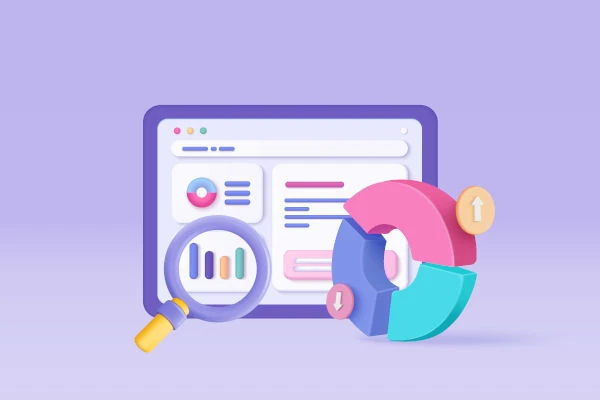
We analyze your website's current backlink profile to identify opportunities for improvement.
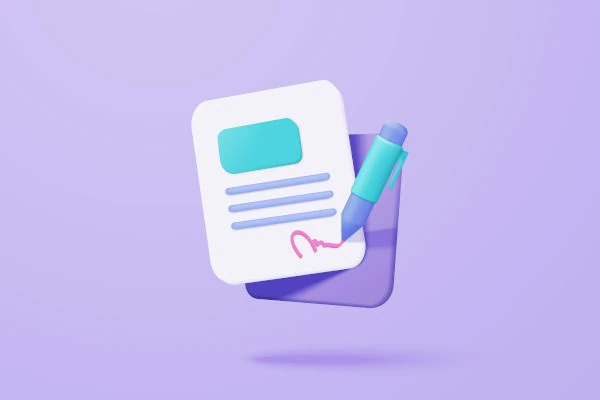
Then we create 100% unique content to rank in on Google.
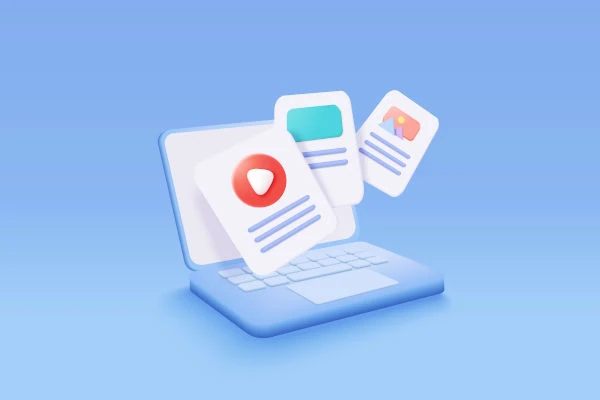
We create high-quality backlinks from authoritative websites in your niche with Domain Ratings (DR) ranking from 30 to 92.
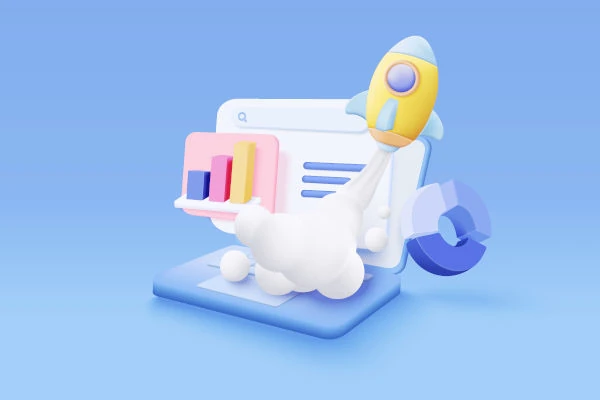
We continuously monitor the performance of your website and provide detailed backlinks reports.
Discover incredible services that will skyrocket your website traffic and bring more customers to your business.
Improve your website's ranking in search engine using these backlinks. They are a fundamental part of any SEO strategy and are typically a safe choice.
Does your website have a low Domain Authority score? This service will help boost your website's authority and improve your overall search engine ranking.
Share your latest news, products, services, or events with a larger audience using the power of an effective press release. Capture the attention of potential customers and give your company the exposure it deserves. With press release distribution, you can expand your reach and enhance your brand's online presence like never before.
Get high-quality backlinks from well-established and reputable platforms like Microsoft Azure, Amazon S3, Google Cloud, etc., this service helps you establish authority and credibility in your niche.
Boost your website's and Google My Business (GMB) listings organic traffic with our cutting-edge Click-Through Rate (CTR) manipulation service. Experience a remarkable surge in visitors and potential customers!
Get the most out of Google by obtaining your backlinks directly from the search engine giant. Our service is designed to leverage all of your company's Google assets and improve your website rankings on major search engines.
Boost your rankings in SERPs with this service. This service helps improve the visibility of your website.
Expand your backlink profile by incorporating Geo Relevance. Demonstrate to Google that your website is connected to locally themed sites with geo relevance. This strategy is particularly effective for enhancing Branded Anchor Text and establishing connections with your Website, Location Pages, and GMB.
Increase your business's online visibility by listing your business in top 300 directories and local search websites. This is an effective way to improve your search engine rankings and attract local customers to your business. Local citations are essential for businesses that rely on local customers and want to improve their local search engine optimization.
We have worked with individuals and businesses. They bought high-quality backlinks to rank better on Google.

Very helpful and great customer service. The team delivers on what they promise. Looking forward to see the long terms results in the strategy they proposed for one of my customers.
Athanasios Georgalis

I had the pleasure of meeting with Tony to discuss a project and my future goals in helping small business owners with SEO. I left the meeting feeling I had made the best choice with LinkDaddy. Their options will help my clients in any situation and the support excels in the fact that not only are they helpful but have years of experience in the industry.
Michael Williams

LinkDaddy has been a reliable link source for me for the past 6 months. Even their free link package has helped out my sites. Their wide variety of link packages and services are incomparable to other link sources. I highly recommend LinkDaddy.
JackPhoenixSeoDesign

Support is very helpful and pointed out some things that I could do to help my website, I have also ordered services for SEO and they have been completed on time and as described. Love the credit deals and stock up when they are offered!

Jennifer

Link Daddy takes the time to follow up customers and reassure the orders are complete, and if not they send you a link for promotion. That is 100% good customer service.

Daniel Joseph

The backlinks are working and the results are showing for ALL of my accounts. Thanks, LinkDaddy for your consistent and professional services.
Rickus Jansen

I have been using LinkDaddy since April 2022 and l have done 117 orders as of February 2024. The aggressive tier 1 backlinks (Keywords Backlinks) help you to dominate the serps like gang busters. 70 percent of tier 1 backlinks gets indexed. LinkDaddy is a one stop shop for all your SEO services.
Tatenda Rukuni

I have placed 2 orders with LinkDaddy recently that I required extra help with, and on both occasions they went well above and beyond to see to it that I was happy. These were also the first and only orders I’ve placed so far. So far… I will definitely being doing all of my link building services with LinkDaddy from now on!
Jason Wall

Amazing service, My DA went from 0.7 to 27 in four weeks! I definitely seem to be getting a lot more organic traffic as a result. Highly recommend!
Jan Herremans

I liked what's promised had been delivered.
Vaibhav Singh

Linkdaddy's DoFollow SEO Backlinks worked really well to improve my website's Google ranking.
Eric R

LinkDaddy continues to be an incredibly valuable linkbuilding resource for my clients. Services are delivered quickly and contribute quickly to the success of the website's authority, SERP movement, and daily impression rate. Highly recommneded!
Monty Hobson

Had an initial very informative call with Tony and we proceeded with the Domain Power Booster and the Done For You services for three of our e-commerce stores. Our Domain Ranking on all three stores was increased within 2-3 weeks and the Done For You service has initiated a lot of new, high ranked back links on all the stores. Good communication with Tony and staff!
Warren P

LinkDaddy and Tony are my secret weapons that I use to rank my sites, URL's for National and Local SEO (GMB). Listen to his strategies carefully, and you will get the results. Tony is an honest man and has always delivered the gigs in the specified time Thanks for your amazing services, Tony.
Adan Rabz

I have a brand new website that has zero backlinks. I learned that without backlinks the website would never get any ranking that would make the site accessible by the search engines. I found LinkDaddy and took advantage of their free service. Within a week I received their email showing where they had completed my free offer. There were more Do Follow links than they had advertised. Thanks Tony!
Alan Brewer

I highly recommend Tony and his team at LinkDaddy. I ordered the domain Power booster and the do follow SEO backlinks. I'm about 3 weeks in and my domain rating went from 0.1 to 25 and is still increasing! Backlinks went from almost nothing to over 400 do follow. Not to mention the communication is excellent. I will continue to use LinkDaddy and their services. I'm very pleased overall.
Bobby Hamilton

Very prompt attention to my request, and 100% resolved (literally overnight). Definitely 5-Star Experience. Tony and his team @ LinkDaddy have definitely got it together! My 2nd review after 6 months - it just keeps getting better, and every product works, usually better than expected! Very happy customer. RECOMMENDED

Ray Evans

It is not the first time that I have placed an order with LinkDaddy. And it keeps getting better! You can see how they are developing and getting stronger and stronger. Highly recommended.
Max Arion

I recently used LinkDaddy.shop's link building service and was very happy with the results. They provided top-notch customer service and the turnaround time for the project was quick. The team was extremely knowledgeable about SEO and provided great insights that I wouldn't have known otherwise. In addition, all of the links I received were high-quality and relevant to my website. Overall, I highly recommend Linkdaddy.shop if you're looking for a reliable link building service!
Alvin Silang

I have been using LinkDaddy for about 6 months now. Their gigs are well priced, communication is excellent and they provide proof of work done. Every time I ask them to do a gig, I get an increase in enquiries about a week to 2 weeks later, showing me that I am actually ranking better.
Roland Chandler

I recently started working with LinkDaddy to improve my website's organic rankings, and I have been blown away by the results. From the very beginning, the team was professional, communicative, and highly knowledgeable about SEO best practices. They took the time to understand my business and target audience and used their customized strategy to help me achieve outstanding results.
Juan R

I've worked with a number of backlink providers over the last couple of years. I can honestly say that LinkDaddy provides the best service in the business. From the quality of work to the communication with the (helpful) team. Thank you LinkDaddy👍
Michiel von der Crone

Honestly this is an amazing service that Tony is providing. The links are all extremely high quality and I have seen huge ranking increases because of it. Tony also sat down with me one-on-one to discuss a strategy to get some of my harder to rank keywords to start seeing some movement.
Brunson

For Video Rankings, LinkDaddy® are the best ! I ordered the YouTube Video Ranking package from them and within 10 days I was number 1 for a very competitive keyword in the seo niche - both on YouTube and Google Search! If you ever want to rank something - go to LinkDaddy®.

Cornel Rademeyer

Amazing services, LinkDaddy team added my website and GMB in thousands of blog posts and I am already seeing some results, lots of very good backlinks, thank you very much, looking forward to do more business with you guys.
Amanda

Fantastic company. They did everything as they said. Perfect services and great links. Thanks Tony and crew for the free trial!

Todd Jirecek

Upon using LinkDaddy's free trail, we saw almost an immediate increase in organic search results. We are extremely pleased with the results we achieved with LinkDaddy, and we will definitely continue to work with them in the future. Their expertise and experience in the field of SEO are second to none, and we highly recommend them to anyone looking to improve their website's visibility and search engine rankings. Thank you, LinkDaddy, we're glad we found you!
Jared Ryan

First time I have used this service and was very impressed. Delivered as promised. Looked through their work and it seems to be good quality. I will be using them again after taking up the free offer. My site is already starting to move in the right direction thanks to LinkDaddy.
Terry Glass

I have had a number of things done by LinkDaddy and I can tell you they are fast, accurate, and authentic with everything they do. Used there DA Authority Booster to bring my pages up from nothing to over 30. Not bad when the site is fresh out of the gate. If you need anything in the form of link building or authority backlinks do yourself a favor and give Tony and his team at LinkDaddy a try. You won't regret it!
Steve Morgan
Stay ahead in the ever-changing world of SEO and backlinks. Explore our latest insights and strategies for ranking higher with quality backlinks in our blog section.

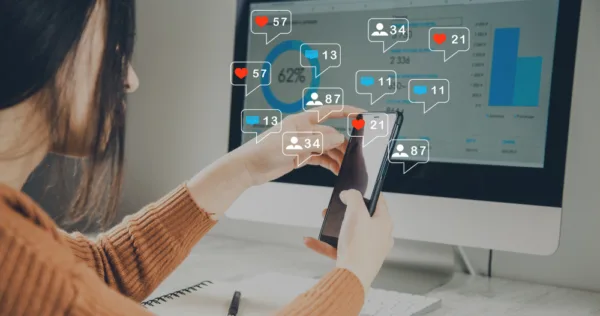

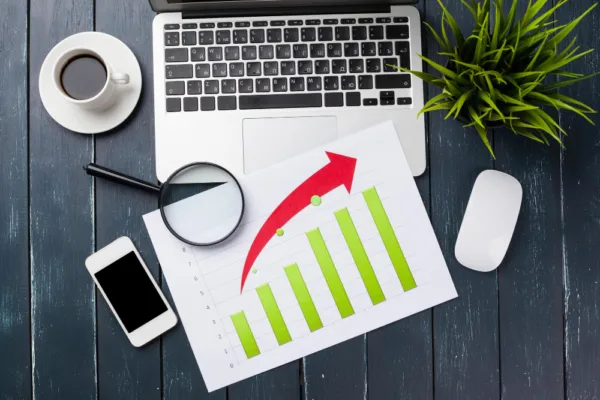
Get answers to frequently asked questions. If you can’t find what you’re looking for contact us.
Backlinks, also known as inbound or incoming links, are links to your site from other popular niche-relevant websites (blogs, guest posts, press releases, local citations, etc.)
They are essential for search engine optimization (SEO) as they signal to search engines that your website is reputable and relevant. Backlinks can improve a website’s search engine rankings and authority. A website can gain a competitive advantage by having more link popularity than its competitors.
The timeline for seeing results may vary depending on your website’s current status, industry, and competition.
Typically, noticeable improvements in your SEO rankings can be expected within 3-6 weeks after Google bots crawl our backlinks.
Our main focus is to obtain high-quality backlinks from authoritative and relevant websites. We prioritize acquiring links that are both reliable and relevant to our website’s niche.
Our team prioritizes quality over quantity to ensure a high-quality backlink profile using white-hat SEO practices.
Totally. The practice of purchasing backlinks remains relevant. Many successful businesses across various industries, including insurance, casinos, home improvement services, e-commerce, technology, and finance, still heavily invest in acquiring links.
Purchasing backlinks simplifies the link-building process by alleviating the workload associated with tasks such as content creation, prospecting for link opportunities, and manually establishing backlinks. This approach also accelerates the timeframe within which you can observe concrete results.
Given these advantages, numerous SEO experts are willing to explore this approach in 2023.
Absolutely. Our Done-For-You-SEO service is a comprehensive solution that handles all your link building requirements. You simply establish a monthly budget and share your objectives with us. From there, we consistently provide you with new backlinks each month.
This service includes a custom link building strategy designed specifically for your website, addressing its unique requirements to help you reach your objectives.
While our team of link building experts generates additional inbound links and enhances your backlink profile, you can relax and focus on other critical tasks.
We make sure the backlinks we create for your business stay up for a long time. Our aim is to have them stay forever, so you can keep getting the benefits from them.
We want your website to be trustworthy and visible, and these links play a big role in that.
Sometimes things can happen, like a backlink accidentally being removed from a blog post or other backlink source.
If a link we created for you disappears within a certain timeframe, we’ll replace it for free. We want to make sure you’re happy with your links and that they keep working for you.
Contact us and let us know. We’ll take care of it.
Yes, we specialize in white-label link-building services. These services are ideal for SEO agencies seeking to outsource their link building tasks or for those looking to resell them to their clients.
Yes. You can test our Free Trial campaign for only $1 and receive results within a week. Usually, this campaign costs $49.
Absolutely, we can apply all our methods for creating links to websites that use languages other than English.
Yes, we can generate backlinks for any page you’re aiming to enhance in terms of search engine rankings.
Certainly! We offer a Credit Pack Program that allows you to receive up to 50% discount in Bonus Credits, which you can then use to purchase any of our services.
We’re not like other link-building services; we don’t just create backlinks and leave you to figure it out. What makes us different is that we genuinely want to help boost your website’s position in search engines.
Our reports will show you all the pages on your website and the backlinks we’ve made. Plus, we keep an eye on how things change over time and watch how your web pages are doing in search results.
This way, we can focus on getting you the results you want, and we’re not just thinking about the links themselves.

Book a free call and get expert advice from our CEO on the best backlink strategy for your business.
© 2024 LinkDaddy® All Rights Reserved
Subscribe to our newsletter and be the first to receive exclusive offers directly to your inbox.